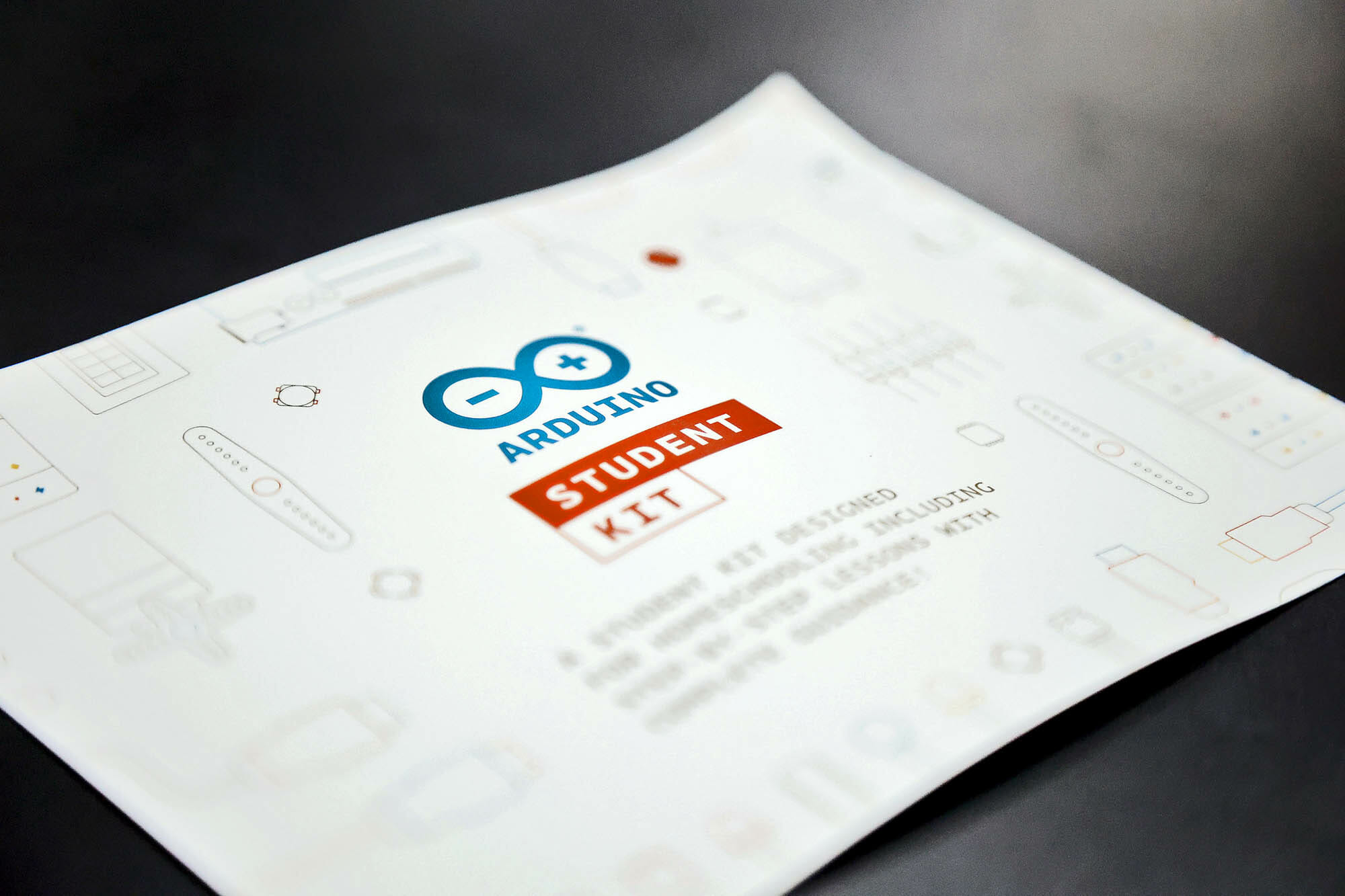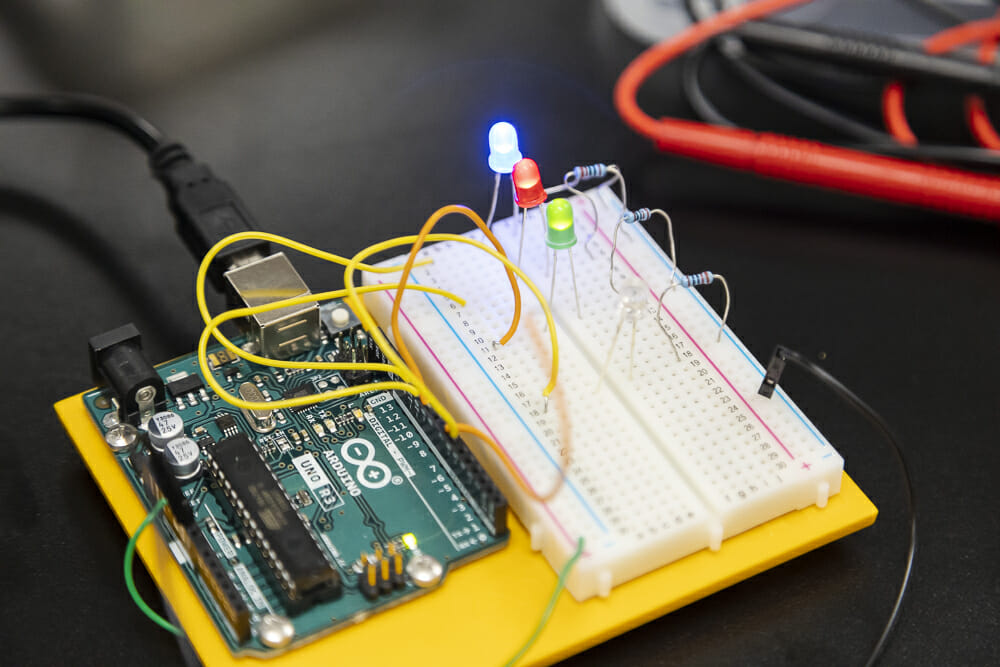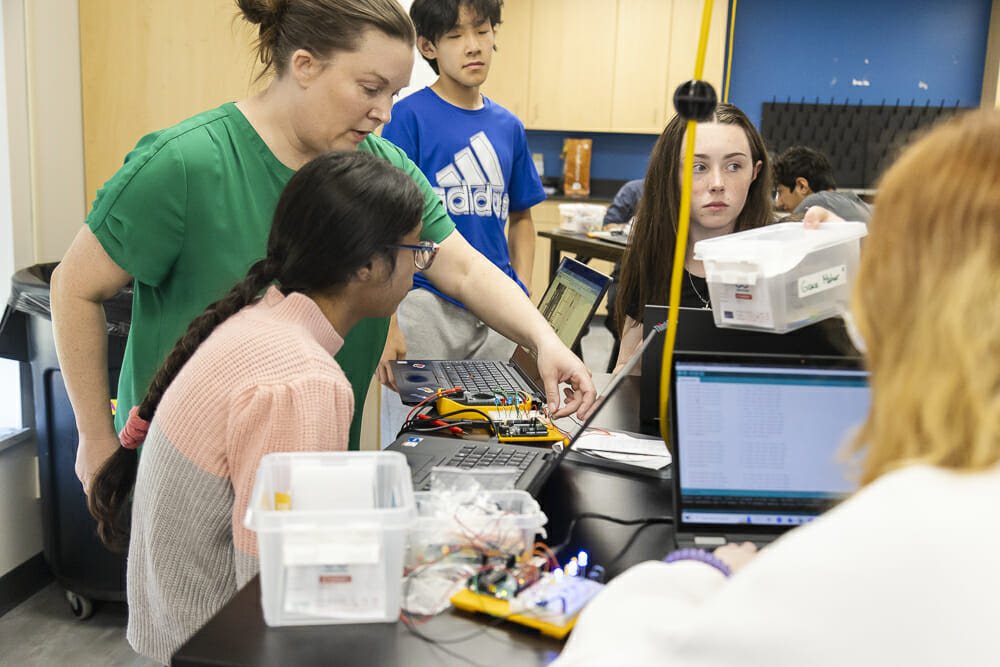Eighth-grade science students embarked on a new hands-on project this year: using the Arduino programming platform to instruct Atmel microcontrollers. This sounds pretty complicated, so we reached out to JK-12 Science Department Chair Paul Zahller to explain.
“Arduino is an open-source hardware/software programming platform based around Atmel microcontrollers,” Zahller said. “Open source means that circuit schematics and source code of the software used in designs are freely available and can be modified by anyone. A microcontroller is a type of computer in the form of an integrated circuit or microchip, which is often used in devices in your home which incorporate electronic circuitry. Other common examples include Intel Pentium which is used as the CPU (Central Processing Unit); effectively the ‘brain’, in a computer. Microprocessors are integrated circuits that process the instructions in a computer program, perform calculations, and send data to and from memory and disk.”
This project allows students to take control of their learning, literally. Arduino is a credit card-size development board that is able to read inputs such as a light on a sensor, a finger on a button, or a Twitter message, and turn those inputs into an output: activating a motor, turning on an LED, or publishing something online. It’s nothing without human input, though, and that’s where our students took control. They embarked on a series of projects that began in February.
Eighth-grade Science Teacher Michelle Hrastich explained. “We started off by having students complete some basic objectives: wiring series circuits on their breadboard, using pre-made code to make a light blink, and then manipulating that code to have the light blink faster or slower. They then started to get into more complicated objectives: wiring a parallel circuit and writing code to create a traffic light that would allow traffic to flow more smoothly on the roads outside of the middle school, adding a switch to create a pedestrian light, and building a circuit with a dimmer switch.”
One of the more recent activities was to create a holiday light project. Students coded multiple lights to blink or fade in various patterns. Several students went a step further, coding theirs to music to create a choreographed light show.
“Collaboration is a huge part of their success,” said Hrastich. “While students are required to create, build, and code on their own Arduino, they still work in pairs or groups on each lesson. They help each other problem-solve to determine why their lights or switches aren’t working by constantly double-checking their circuitry and reviewing their code with one another.”
It hasn’t always been easy, which is an important part of the learning process in science. This is where patience and collaboration become important tools in the classroom. “Besides building and coding circuits, one of our goals is for students to get comfortable with the uncomfortable,” said Hrastich. “It can get frustrating when you work hard on something only to have it not work right. Students have learned that failing is just part of the experience. They know if they just take a step back and maybe get a second pair of eyes on their project, they’ll figure out the problem. Once they finish each lesson, they leave class with a sense of accomplishment.”
The next Arduino unit will help students learn about sound and light waves. Since each student has their own Arduino, they’ll get to take them home at the end of the year.
Zahller said, “I am very excited about the implementation of Arduino to the eighth-grade curriculum this year. Rather than listening to lectures and then demonstrating knowledge by passing an exam on electricity and circuits, students actively participate in the learning process through hands-on labs and projects. This not only encourages problem-solving, critical thinking, and reasoning skills but also prepares students to teach themselves, which is critical in a constantly changing industry.”























































